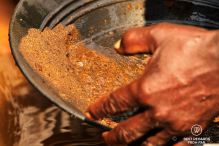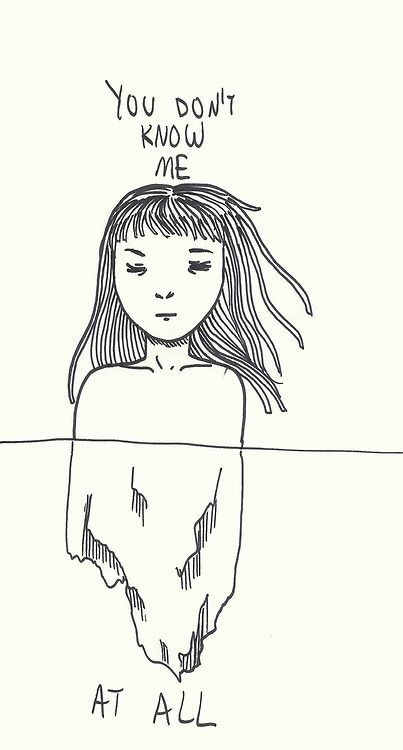Sabie in the North East of South Africa is an outdoor paradise and the perfect base to explore the Blyde River Canyon, the Kruger National Park and the picturesque villages that made the gold rush history like Pilgrim’s Rest. Let’s dig more into it!
Digging for gold in the area started way before the 19th century gold rush. A long time ago, Indians landed on the East Coast of Africa pushed by the monsoon winds and started trading routes with African tribes to exchange eastern goods against gold, gems, ivory…

 Mining camp at the Mining Museum, Pilgrim’s Rest, South Africa
Mining camp at the Mining Museum, Pilgrim’s Rest, South Africa  Gold panning in Pilgrim’s Rest, South Africa
Gold panning in Pilgrim’s Rest, South Africa
But it is only at the beginning of the 18th century that the story of Sabie and its surroundings took a turn. Tribal wars put an end to the trade routes and trading posts. The Dutch immigrants who fled Cape Town to explore and populate the new republic of South Africa, the Voortrekkers, arrived in that context. They brought the western civilization, more powerful weapons, maps, the wheel, and more importantly, law and order. Local tribes had to make peace with each other and with the Afrikaners. Land concessions were agreed upon.
Based on the claim of a geologist, the first gold prospectors arrived from Europe. In 1872, Thomas McLachlan found gold around Sabie in what has become the Mac-Mac area, triggering the first gold rush in South Africa. Another prospector, Alex Patterson decided to prospect further and in 1873, he found rich gold deposits in the Pilgrim’s Creek. By the end of that year, more than 1500 diggers were looking for gold in the newly founded Pilgrim’s Rest!
At the turn of the nineteenth century, nearby Sabie became a shelter for European newcomers thanks to its flat terrain, fresh water, and constant flux of travellers making it a safe place: Sabie village developed where wagons crossed and stopped. Its founder, H.T. Glynn also founded the Glynn’s Mining Company and hired prospectors to search the area for gold-bearing reefs as reefs in the Sabie area produced the most gold in the district.


 The first and only garage in Pilgrim’s Rest, South Africa
The first and only garage in Pilgrim’s Rest, South Africa
The first settlers had to be very resourceful as there were no vets, doctors, teachers nor blacksmiths. Men were hunting, building their own house with their own bricks, making their own furniture, fixing their carts while women made clothes, cooked and took care of the family. Beyond panning and digging, the settlers started growing wheat, oats, fruits and vegetables for their own use and cattle to trade. The gold created a whole economy. The need for wood became very high. The indigenous forest had almost disappeared and eucalyptus and pine trees were planted to compensate for it, leading to what is today the largest man-made forest in the world.

 The post office Pilgrim’s Rest, South Africa
The post office Pilgrim’s Rest, South Africa  The Old Print House, Pilgrim’s Rest, South Africa
The Old Print House, Pilgrim’s Rest, South Africa  The Old Print House, Pilgrim’s Rest, South Africa
The Old Print House, Pilgrim’s Rest, South Africa
But within three years, in 1876, the alluvial gold or heavy gold particles and nuggets found in the soil and gravels in the streams flowing through the valley had waned. As the gold initially came from the reefs that were submitted to the elements and weathered down, the next step was to mine gold in the interbedded reefs on the hillsides: a more complex and more expensive process. The new born Transvaal Gold Mining Estates (TGME) owned the land. Its profits were based on the fluctuations of the global gold market regardless of the local costs: if some gold nuggets weighing up to three kilograms were found regularly and if the Pilgrim’s Rest goldfield was one of most important gold producers in South Africa, Pilgrim’s Rest didn’t develop like Johannesburg did. The TGME could work 30 mines at the same time as the output were highly unpredictable. The tents got slowly replaced by more permanent living quarters, and as they didn’t own them, residents did not invest in the properties they lived in. When the TGME closed the last mine in 1972, Pilgrim’s Rest got abandoned in the same state it was at the turn of the 19th century, making it a living museum.
 Johnny’s pub (also known as the Vine), a must visit in Pilgrim’s Rest, South Africa
Johnny’s pub (also known as the Vine), a must visit in Pilgrim’s Rest, South Africa  Johnny’s pub (also known as the Vine), a must visit in Pilgrim’s Rest, South Africa
Johnny’s pub (also known as the Vine), a must visit in Pilgrim’s Rest, South Africa
It did not take long to realize the value of Pilgrim’s Rest and establish it as a historical site, also marking the birth place of the South African gold mining industry that will create sprawling cities like Johannesburg. As we are wandering down its main street, we feel out of time: every shop is a history book retracing the life of these gold diggers and early settlers, their challenges and achievements. All the way down, Johnny welcomes us in his homey pub where photographs of inhabitants of Pilgrim’s Rest over the last century are hanging on the wall. More than setting the atmosphere, these are memories for the regulars in one of the very last operational businesses of Pilgrim’s Rest.
Marcella & Claire
Travel tips:
- Prefer a weekday to visit Pilgrim’s Rest, as it can get quite busy on weekends.
- At Pilgrim’s Rest, make sure to stop by The Vine, also known as Johnny’s pub. Its historical decor, good food menu, and authentic photographs make it a no-brainer.
- Sabie is the perfect base to explore Pilgrim’s Rest and its surroundings. We warmly recommend The Wayfarer’s by Chris and Merle, whose excellent advice can be followed eyes closed. In their lovely and very comfortable bed & breakfast, you will be surrounded by Chris’ wildlife photographs and endless resources about the area and Kruger.
- Check out this interactive map for the specific details to help you plan your trip and more articles and photos (zoom out) about the area! Here is a short tutorial to download it.





